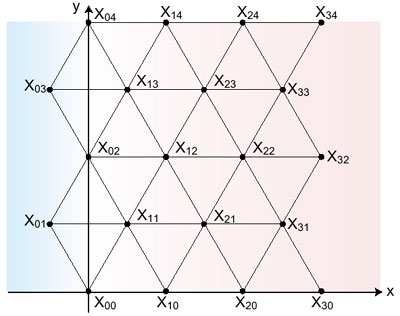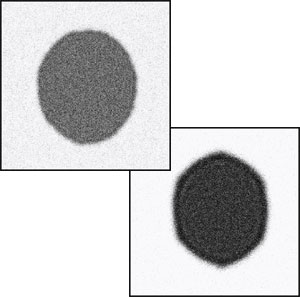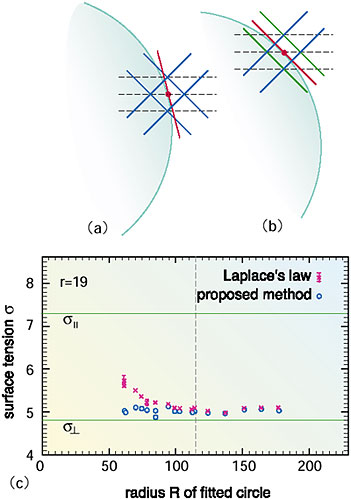Motion of fluids as liquid or gas are traditionally analyzed by solving partial differential equations named the Navier-Stokes equations. Recently, however, methods to solve such fluid motions by lattice gas model (LGM) are often studied by many researchers. The LGM method can deal with a two-phase simulation rather easily, where, phase changes between two different phases such as gas and liquid are important. To carry out the simulation of fluid by LGM, at first, a computational domain is divided into regular grids such as two-dimensional triangular grids (Fig. 10-9), and then many artificial particles placed on the grid points are moved according to a given rule for collisions among the particles. In a result of the simulation of the artificial particles we can see fluid behavior which is the same as that of the ordinary fluid. Even in the case with phase changes there is no technological difficulty such as is found when the partial differential equations are solved.
However, when we use this method to carry out a simulation of liquid drop formation in a gas the shape of the liquid drop does not become circular (Fig. 10-10). It is because the surface tension of the liquid drop is not uniform on the surface due to the discrete structure of the space by the grids. Because in the calculation of the problems including phase change the role of the surface tension is very important, it is necessary that surface tension at phase boundaries with various shapes can be always calculated. Though, in the previous method to calculate the surface tension, it was necessary to introduce an arbitrary parameter, we developed a new method by which a unique solution can be obtained without an arbitrary parameter. By using the new method, therefore, the range of applicability of the LGM is made clear and the reliability of the method is increased (Fig. 10-11). |



